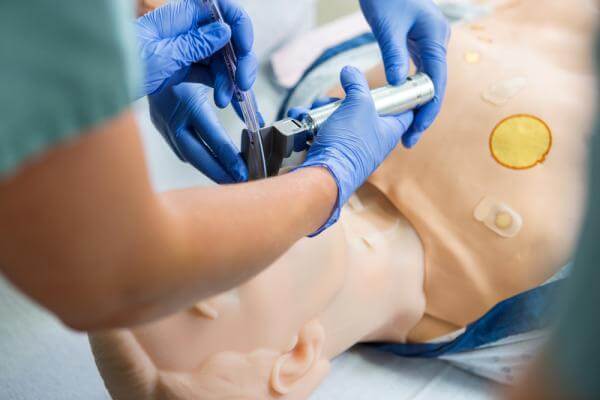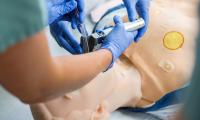
England’s Chief Inspector of Hospitals has published his first report on the quality of care provided by Bradford Teaching Hospitals NHS Foundation Trust.
Bradford Teaching Hospitals NHS Foundation Trust was inspected between 21 and 24 October 2014 and inspectors returned unannounced on 4 November 2014 as part of CQC’s comprehensive inspection programme.
Overall the report concludes that the trust requires improvement. Safety was rated as Inadequate, effectiveness, responsiveness and leadership were rated as Requires Improvement, and caring was rated as Good.
Inspectors found that the trust was dealing with the challenge of wide ranging changes within the organisation, which had been introduced over the last few months prior to the inspection. Changes included a new leadership with a new Chair and Chief Executive, and new organisational structures and governance arrangements.
Bradford Teaching Hospitals NHS Foundation Trust is an integrated trust, which provides acute services at Bradford Royal Infirmary and St Luke’s Hospital. The trust also has four community hospitals; Westwood Park, Westbourne Green, Eccleshill and Ward F3 at St Luke’s hospital (which was run as a community hospital).
During the inspection, CQC saw a number of areas of outstanding practice including, at Bradford Royal Infirmary:
– The hospital was providing twelve internships for people with learning disabilities. This gave people valuable work experience and encouraged integration within the community
– The surgical services had introduced a system of ‘green bands’ worn by patients on their wrists displaying personal and procedure information. This was recognised as an effective safety measure by the World Health Organization (WHO) Five Steps to Safer Surgery checklist.
– Working in collaboration with Macmillan Cancer Support, the hospital specialist palliative care team (HSPCT) were awarded the International Journal of Palliative Nursing multidisciplinary teamwork award for the positive impact that their work had on the care they provided.
At St Luke’s Hospital:
– There had been improvements to the wards to make them more user friendly for people living with dementia.
And across both acute sites
– In diagnostic imaging, all ultrasound sonographers were independent reporters. There were a high proportion of advanced practitioners which had helped improve access to services.
Throughout the inspection patients and their visitors reported that staff treated them with kindness and respect. Analysis of patient feedback on the whole confirmed that patients were positive about the care they received from staff at the trust.
Inspectors observed positive, kind and caring interactions on wards and between staff and patients. Assessments for anxiety and depression were undertaken, particularly in the surgical specialities and additional support was provided. There was excellent support from the chaplaincy service, across all faiths.
The inspection team found that the trust must make a number of improvements at trust level, including:
– Ensuring that the significant backlog of outpatient appointments is promptly addressed and prioritised according to clinical need
– Ensuring that the governance and monitoring of outpatients’ appointment bookings are operated effectively and are able to identify any potential system failures, assess them and take action so as to protect patients from the risks of inappropriate or unsafe care and treatment
– Ensuring there is access to sufficient numbers of suitably skilled and experienced staff
At Bradford Royal Infirmary, the trust must:
– Ensure that the care and treatment of patients undergoing non-invasive ventilation meets the national guidance
– Ensure there is access to sufficient numbers of suitably qualified and skilled staff working in children’s services, the recovery areas of the operating theatres and maternity services
– Ensure that the arrangements for stabilising children waiting for transfer to another hospital for paediatric intensive care were safe
– Ensure that there are appropriate arrangements for the prevention and control of infection including the isolation of patients throughout the hospital, including the urgent and emergency care department; that infection prevention and control practices are adhered to, particularly on Ward 9 and in critical care
– Ensure that there is suitable access to hand wash sinks, particularly on the critical care unit and high dependency unit. Review the number of side rooms available with en suite bathroom facilities for the management of patients with infections
– Ensure the procedures for cleaning and disinfecting endoscopes are consistent with accepted practice.
At St Luke’s Hospital the trust must:
– Ensure there is access on the wards to sufficient numbers of suitably skilled and experienced staff, particularly medical staff, at all times
For the Community Inpatient Services the trust must:
– Ensure that staffing levels on the community wards reflect the trust’s own planned levels and an acuity or dependency tool is used to determine staffing levels.
Professor Sir Mike Richards, CQC Chief Inspector of Hospitals said,
‘There have been some significant organisational changes introduced over the last few months, including changes in the leadership team with a new Chair and Chief Executive in post. New appointments had also taken place throughout the different clinical and managerial levels across divisions and departments.
‘I do have concerns that many of the changes to systems and processes have yet to be embedded in practice and the lack of maturity of these arrangements meant that they were untried and tested with regard to robustness and effectiveness.
‘I do commend the trust for the many areas where they have been able to demonstrate good and outstanding practice. The palliative care and elderly care teams have been doing some ground-breaking work.
‘There had been a commitment by the executive team to consult and involve staff, particularly the clinical body. However, further work was needed to engage staff over improvements For example; a major challenge for the trust was the age of the buildings and some of the estate stock, particularly at Bradford Royal Infirmary. Improvements to the facilities were in progress with a new build on the Bradford Royal Infirmary site.
‘They also need to address as a matter of some urgency the back log of patients waiting for follow up appointments.
‘While there are some signs that this trust is improving, a number of these improvements are new and need time to become fully embedded ‘ the new executive team still need to engage more fully with staff. We will return in due course to check that the improvements we have identified have been made.’



















